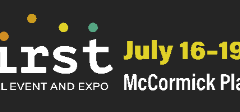In less than 24 hours Seafood Expo North America will be underway! The biggest seafood show in North America, which underwent rebranding this year, has formally been known as the International Boston Seafood Show. This is my favorite event of the year as nothing feels more New England than gathering with 20,000 colleagues to talk about, eat and enjoy seafood. Being a seafood lover and having spent the last 6 years working in the seafood industry, it doesn’t get much better than this.
Or, maybe it does. The seafood show is also located right next to the New England Food Show where foodies of all types gather to learn, sample new products and engage in business. I am excited to see what kinds of new foods will be shown and attend the educational sessions that discuss topics such as food safety, business and of course craft beer!
To add to the fun and excitement, the Ipura Food Safety Blog is holding it’s 4th annual social media/blogging contest. It’s a really cool incentive to get people talking about the show and what issues the industry faces. I am happy to be competing (and tweeting) alongside other notable Boston food bloggers such as Richard Auffrey, Lisa Johnson and Myrna Greenfield. I had a blast doing it last year and learned a lot. Even though I didn’t win, it was still a great experience. There are more participants this year and I look forward to seeing their magnificent content.
There are two new categories in the blogging contest this year which are the “Seafood Sustainability Prize” and the “FDA, FSMA and Imported Seafood Safety Prize” in addition to “Best Blogger Award”. Sustainability and food safety are paramount in the seafood industry. Commercial fisheries, processors and retailers all have a stake to protect our fish stocks and avoid overfishing so there will be wild seafood for many more generations. And we must work hard every day to ensure seafood safety and quality. Critical attention must be given to food safety to ensure public health is protected.
With growing seafood demand and increased globalization of the market, it’s becoming more difficult to regulate imported products. With our FDA understaffed, only about 1% of seafood imports are inspected annually. While the seafood HACCP regulation has worked well in reducing risk for domestic producers, it’s a tough task to ensure processors abroad are following the same rules. Because we import 86% of seafood products, the FDA has stepped up its foreign presence in recent years with increased authority from the Food Safety Modernization Act (FSMA).
FSMA, signed into law in 2011, represents the first major overhaul of FDA’s food safety law in more than 70 years. FSMA gives FDA the tools to prevent, rather than react to food safety problems and ensure that imported seafood is as safe as domestic seafood. In addition, FDA has new tools such as a screening system for imports, called the Predictive Risk-Based Evaluation for Dynamic Import Compliance Targeting (PREDICT), which targets higher risk products.
Among all the issues of food safety and quality, there is another growing trend fueled by greed: seafood species labeling fraud. This was a hot topic at last year’s seafood show as it has devastating effects on the fishermen, their families and the consumers. Species substitution is a form of economic fraud where a lower value fish species is substituted for a higher value fish. It’s almost impossible to distinguish between different species and some greedily use this to their advantage. Even seafood experts (such as myself!) have a hard time discerning Pollock from Haddock.
I’m looking forward to learning about new developments in how the industry is going to tackle these issues. Go here for a full list of the conferences. I will be attending the lectures on seafood labeling, aquaculture and increasing seafood consumption in the US. If you can’t make it Follow me @tsiebertz while I tweet about all the show happenings under hash tag “#sena14”. Happy Fishing!






Leave a Reply